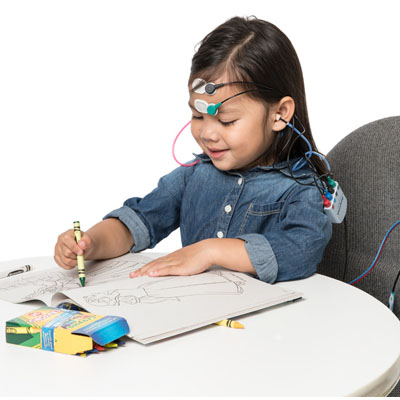What is ASSR and why is it performed?
Basic concepts of ASSR and its purpose
ASSR (Auditory Steady-State Response) is a modern, objective method of hearing assessment based on analyzing the brain’s electrical responses to sound stimuli. In simple terms, an ASSR test helps doctors determine how the auditory system reacts to different sound frequencies. Unlike traditional audiometric tests, this method does not require active participation from the patient, which makes it especially useful for examining infants, children, or individuals who cannot respond accurately to sound signals.
The purpose of ASSR is to measure hearing thresholds at various frequencies with high precision. The test determines the degree of hearing loss and the point at which a person stops perceiving sounds. Thus, the main purpose of ASSR is to provide objective information about the condition of the auditory system without relying on subjective patient responses.
Understanding what ASSR is is important for both specialists and patients. This examination not only detects the presence of hearing loss but also helps identify its type — whether it is sensorineural or conductive. Such a detailed approach significantly improves diagnostic accuracy and assists in choosing the most effective rehabilitation method.
The Center of Hearing clinic actively applies this technology, offering patients a modern, safe, and reliable way to diagnose hearing issues. The use of ASSR helps to detect even minimal deviations at early stages, which is crucial for timely selection of hearing aids and preventing further deterioration of hearing.
How the ASSR procedure is performed and what it shows
The ASSR procedure is completely painless and safe. The patient sits comfortably or lies down while small electrodes are placed on the head and behind the ears. These sensors record brain responses to sound stimuli of different frequencies and intensities. During the test, sounds are played through headphones, and the system analyzes which frequencies the brain responds to and which it does not.
One of the key advantages of this method is its objectivity — ASSR results do not depend on the patient’s age, state, or attention. This makes it indispensable for children and people with communication difficulties.
Main benefits include:
-
high accuracy of hearing threshold detection;
-
simultaneous testing of both ears;
-
no pain or discomfort;
-
can be performed during sleep or light sedation;
-
digital data suitable for fine-tuning hearing aids.
ASSR results reveal the hearing thresholds at different frequencies, enabling the doctor to build a precise audiogram. Therefore, the ASSR test becomes the foundation for selecting a suitable hearing aid and tracking hearing changes over time.
Additional capabilities and accuracy of the ASSR method
The ASSR technique is known for its exceptional precision, especially in diagnosing complex types of hearing loss. With the help of computer analysis and digital algorithms, it can detect brain responses to even minimal changes in sound signals. This level of detail allows specialists to identify hearing problems at an early stage when other tests may still show normal results.
Moreover, how ASSR is performed plays a key role in ensuring accuracy. With proper preparation and calibrated equipment, doctors obtain a reliable picture of the patient’s hearing thresholds. The test can even be performed on newborns within the first weeks of life, making it an essential part of neonatal hearing screening.
Thus, the application of ASSR enables specialists to determine hearing levels with high precision, choose the best hearing aid, and design an effective hearing rehabilitation program.
Practical value of ASSR results for diagnosis
The importance of ASSR in modern otology cannot be overstated. It is one of the most reliable methods that provides objective data without requiring patient participation. Doctors use ASSR results for diagnosis, hearing aid selection, evaluating treatment effectiveness, and monitoring hearing over time.
Hearing diagnostics using ASSR is especially relevant for young children, as early detection of hearing loss allows timely intervention and development of speech skills. For adults, this method is equally valuable, particularly when traditional audiometric tests fail to provide accurate results due to cognitive or perceptual factors.
ASSR helps determine not only the degree of hearing loss but also the site of the lesion in the auditory pathway. This means that the doctor can precisely identify whether the problem lies in the inner ear, auditory nerve, or auditory cortex.
The Center of Hearing clinic uses ASSR as part of a comprehensive diagnostic approach, combining it with other objective tests to ensure maximum accuracy and an individualized assessment for every patient. This makes ASSR one of the key tools in modern audiological practice.

















